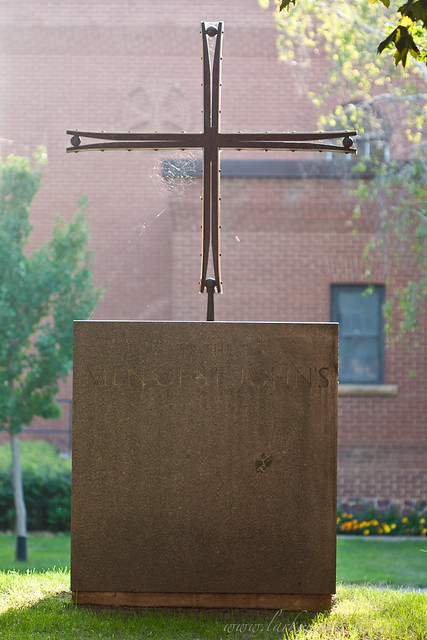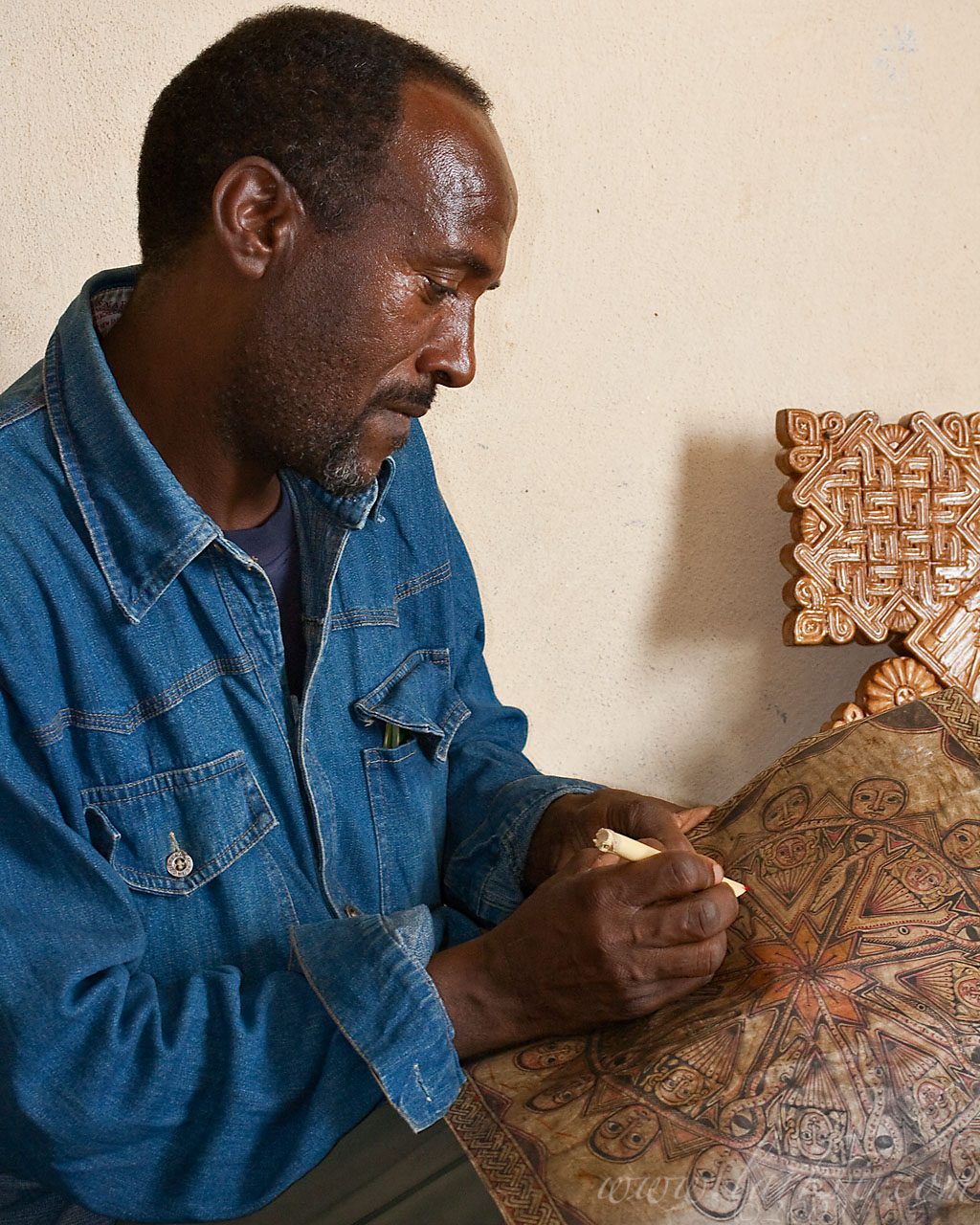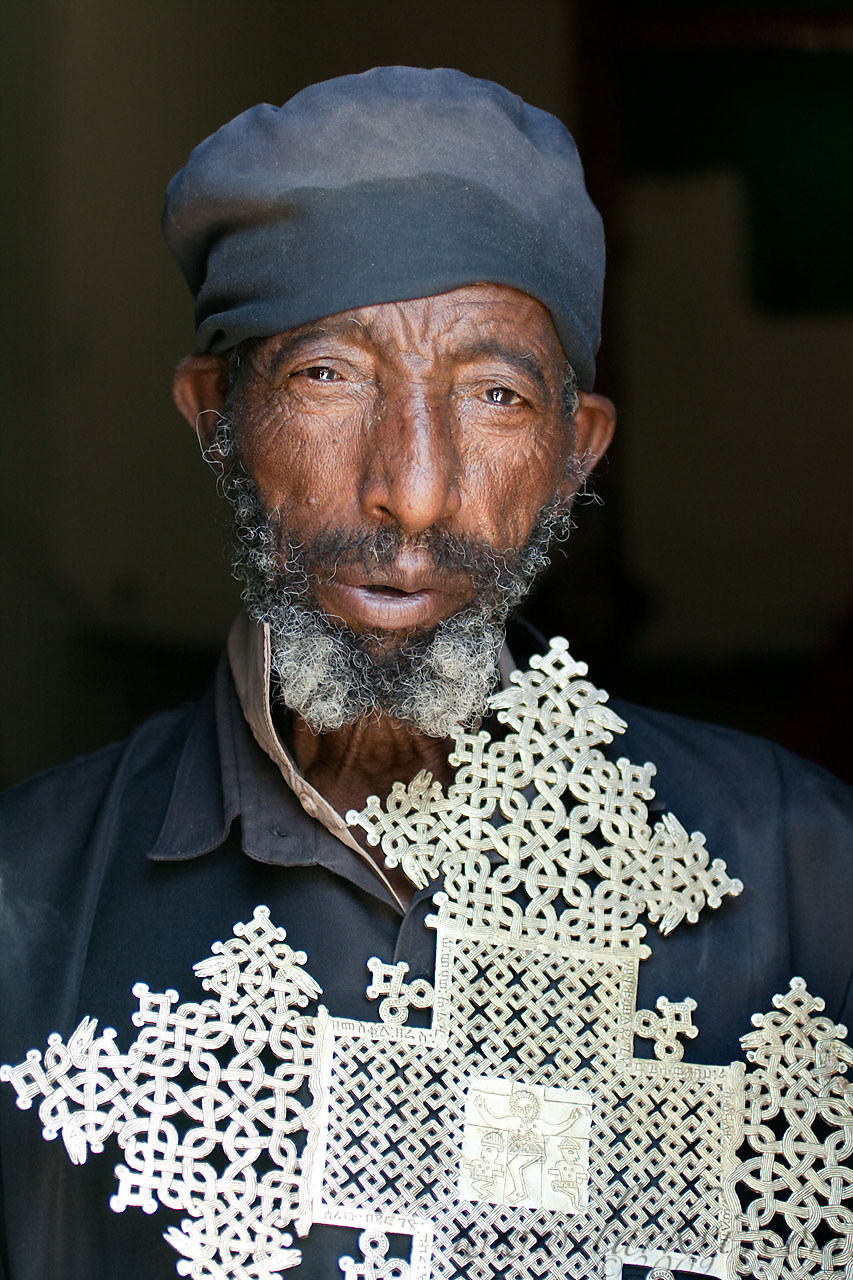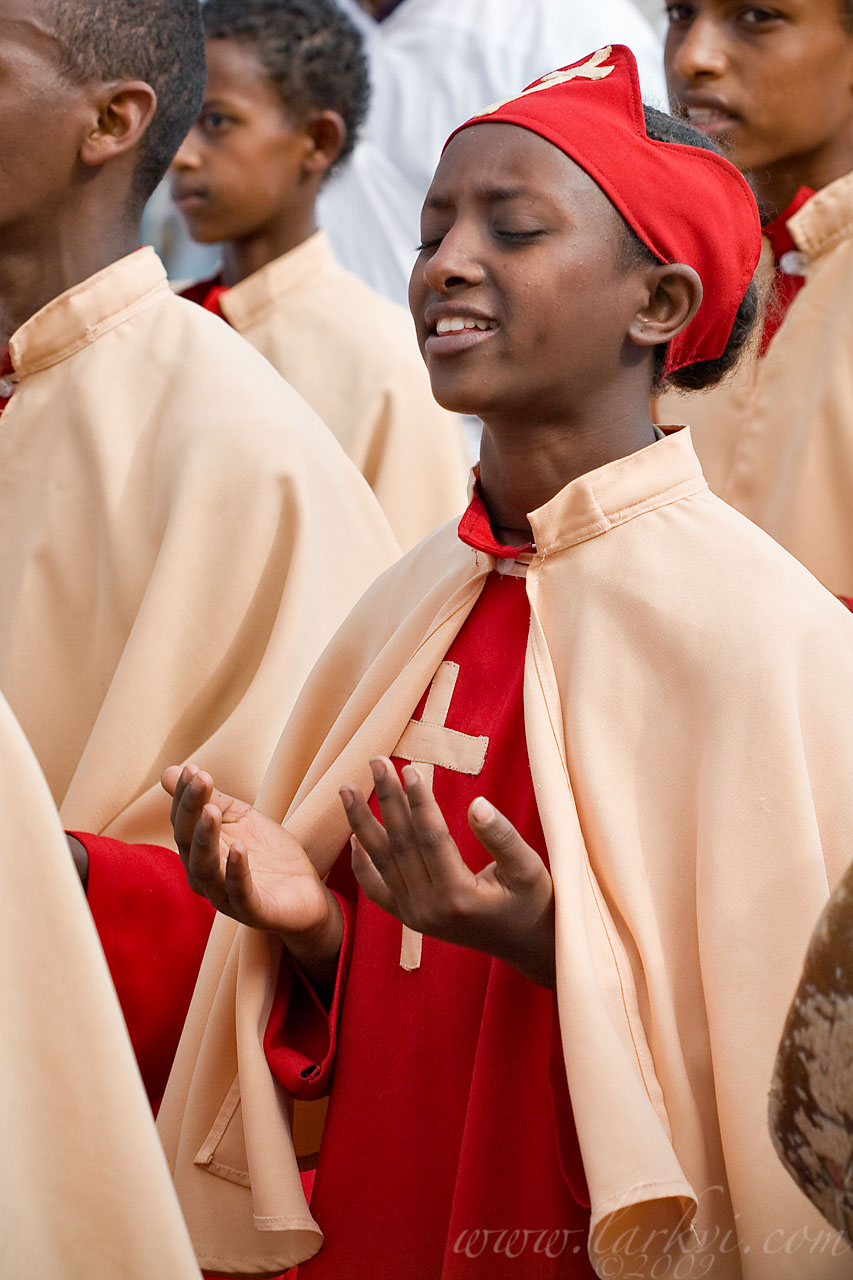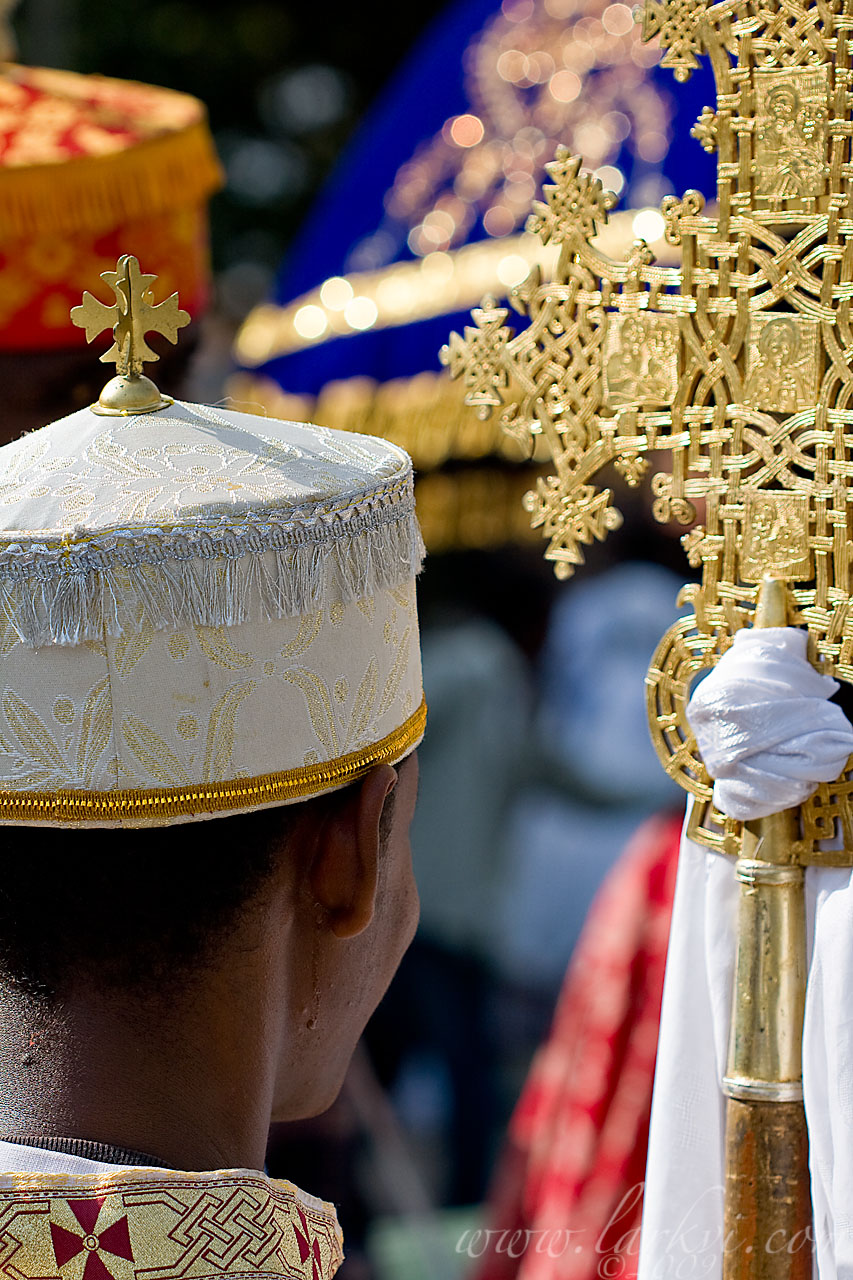The golden cross on the roof of Hayq Estifanos (The Church of St. Stephen at Hayq). Hayq Estifanos is a monastic community on a peninsula in Lake Hayq (Lake Lake) in the Wollo area of Ethiopia. It was an important early site of monasticism South of Tigray and today is a pleasant place birds sing and monks grow crops.
Tag: Cross
Qes Deseta Altah, Gelawdios, Ethiopia 2009
War Memorial, St. John’s University, Minnesota, 2010
The full inscription (all four sides) on this granite block, near the refectory, reads:
To the Men of St. John’s
Who Have Served
Their Country
in Peace and War.
Roof crosses, Bilbala Gyorgis Church, Lasta, Ethiopia, June 2009
Crosses, Bilbala Q’iros Chuch, Lasta, Ethiopia, June 2009
Keshi Mengistu Eyesus, Mek’ele, Tigray, April 2009
Keshi Mengistu Eyesu is a woodworker, scribe, and painter working in Mek’ele. He is a consummate artist, and, though he focuses on woodworking (more profitable) now, his scribal works are excellent. Though he produces them with an ink wash, to "antique" them, they need no selling as antiques, as they are excellent modern examples of traditional Ethiopian art (I’m thinking of buying one myself). Here you can see him finishing off a healing scroll with red detailing, while a carved wooden processional cross of his production sits in the background.
Magic scrolls exist in a continuum with church scrolls in Ethiopian Christianity. As in many societies with low literacy rates, writing is associated with the ability to perform magic. In a Christian society like Ethiopia, this is doubly so, as people are familiar with the magical/miraculous abilities granted to the priesthood through the recitation of written documents of the Church. The learned liturgical specialists of the Church, däbtäras, are also suspected as magicians–the word for magician is däbtära–because they have access to knowledge which is secret, both because it requires literacy, and because it is actually secret. Church scrolls, containing prayers invoking the names of angels, Jesus, and the BVM transition into magic scrolls when, in order to grant additional power or a different kind of power, the secret names of devils, demons, and magical entities are used. Apparently, some of these names are written invisibly in a process that I was poorly able to understand, though I am working on it. In addition to scrolls, Ethiopians keep alive a tradition of amulets, both those familiar from Orthodox Judaism, containing biblical passages, and those of a less religious and more magical nature.
Abba Mäsälä, Debrä Genet Medhane Alem, Mek’ele, Tigray, Ethiopia, March 2009
I am in Mek’ele, the capital of Tigray, the Northern province of Ethiopia, interviewing scribes and other manuscript craftsmen. I took the opportunity to visit the treasury of Debrä Genet Medhane Alem monastery, which has a number of deluxe manuscripts presented by Atse (Emperor) Yohannes IV, who brought Mek’ele to prominence by establishing it as his capital (Ethiopia’s capital has changed a number of times). Abba Mäsälä is the treasurer of the monastery, and when he was putting away the books, I asked if I could take a photo of him. He ran upstairs to the treasury, to get his favorite processional cross, before he was ready to pose for a couple quick photos.




